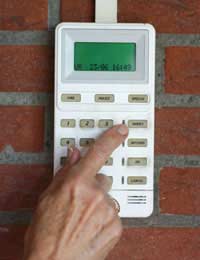Protecting Your Valuables

Not everyone has a collection of priceless artworks in their home. However, increasingly people have a number of high value items - particularly electronics such as cameras, MP3 players and mobile phones - which would make an attractive and easily portable haul for any burglar. Whether an item is a piece of antique jewellery or the latest video MP3 player there is a lot that can, and should, be done to protect it.
Making Sure Your Home is Secure
The best way to protect valuable property is to ensure that intruders cannot get in to steal it. If a home is obviously secure a burglar is much less likely to risk trying to break in. Valuable items should not be advertised - a front room which can be seen by passers-by may look like a shop window to a passing thief.Marking Property
Marking items serves two purposes. Firstly, if an item is obviously marked it will be much more difficult for a thief or burglar to sell it on. Secondly, if stolen goods are recovered by the police they are much more likely to be returned to their owners if they are marked.The police recommend that valuable items are marked with the owner's postcode and house or flat number. There are a number of different methods of marking - some visible and some invisible:
- Ultraviolet pens - invisible other than under ultraviolet light;
- Etching or engraving - visible and permanent;
- Electronic marking - some items such as televisions allow details to be stored electronically. The details cannot be removed unless the code is entered;
- Ceramic pens - will leave a permanent mark;
- Specialist systems for art/antiques - some companies offer a service which marks an item with a DNA, chemical or microdot system.
Photographing Valuable or Unusual Items
Some items may not be suitable for marking as it may diminish their value.Jewellery, art, antiques and other unusual or high value items should be photographed so that they can easily be identified if they are stolen. Such photographs can also be used for insurance purposes.Computers
For most people today the theft of a home computer would be far more devastating than the loss of just another expensive electronic item. Computers may contain anything from family photographs to bank account details. Many people now work from home and a computer may contain months or even years of work. The loss of this gold mine could easily lead to identity theft.It is vital that care is taken to use passwords that cannot easily be guessed as well as other security measures. Data should be backed up on a separate system and kept apart from the computer. Computers can be fixed to a table making it more difficult to remove them - laptops could be locked away when not in use.


Re: Freedom of Information
Hello Team, I’m writing because I noticed your site languishing on Page 2 of Google for high-traffic keywords. Honestly, it makes me…
Re: Security Cameras and Using Them within the Law
With regards to signs indicating the presence of CCTV or a Camera Doorbell. In order for it to be used as…
Re: Security Cameras and Using Them within the Law
Covert camera looks like tape covered ring door bell opposite my front door. 10 feet away what are my…
Re: Security Cameras and Using Them within the Law
I have recently installed a Ring doorbell And would like to know if I’m compliant with GDPR. I have…
Re: Security Cameras and Using Them within the Law
We have suffered ASB from a particular household for more than 2 years. Are we allowed to have cameras…
Re: Security Cameras and Using Them within the Law
My neighbours have put up a CCTV doorbell directly facing my front door and bathroom window less than 7…
Re: Using Anti-Vandal Paint and Other Methods
I am being disturbed by the frequency of intruders gaining access into our distribution networks and vandalizing…
Re: Security Cameras and Using Them within the Law
We would like to use ring doorbells to assist tenants who are experiencing ongoing, entrenched anti social…
Re: How to Stop Vandals Persistently Slashing Car Tyres?
I placed a complaint at my local pizza hut and next thing I know the whole town knows word for word…
Re: Security Cameras and Using Them within the Law
Help. My apartment block has CCTV around the building and at the main door, all residents can view the…